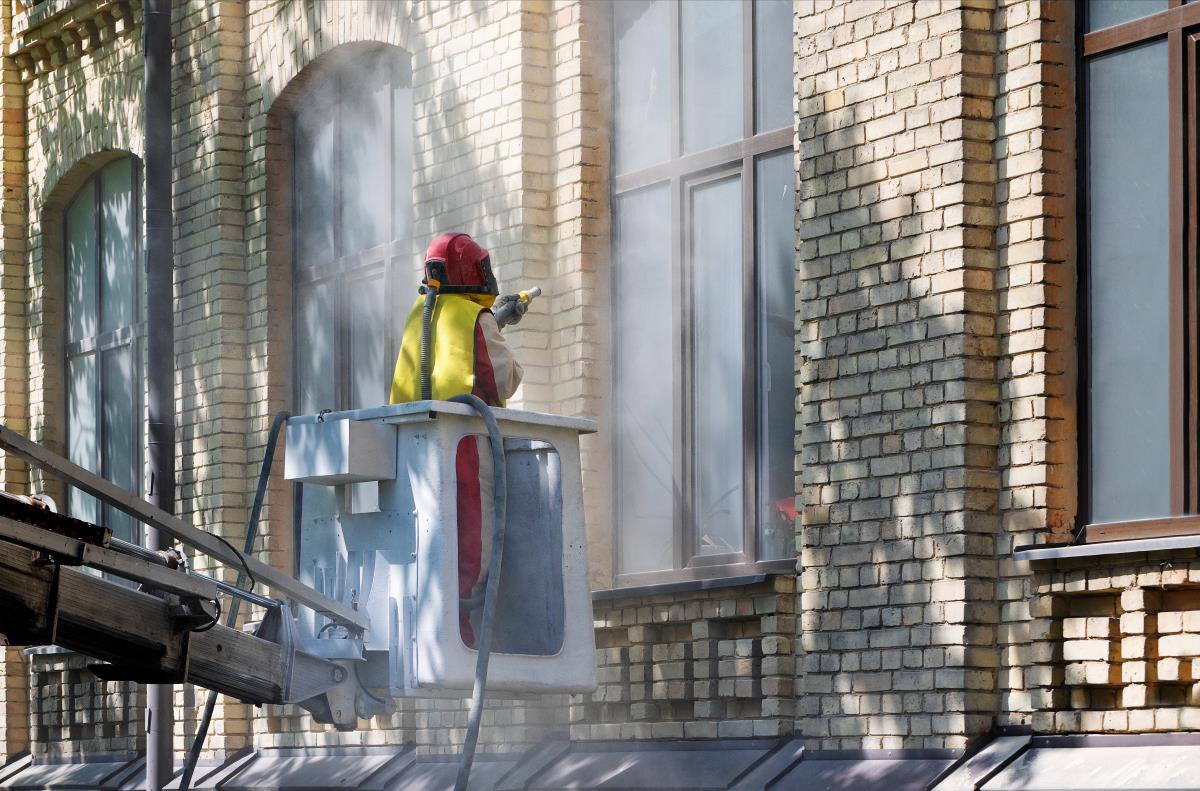
Are you looking for the most effective ways to keep your building’s facade watertight? Dive into the best practices that ensure your exterior walls remain impervious to water damage. By taking a proactive approach to facade maintenance, you can safeguard your property against the elements.
First off, regular inspection is key; spotting small issues before they escalate can save you a bundle in repair costs. This means keeping a keen eye on potential trouble spots, such as cracks or loose sealant. Waterproofing treatments and surface coatings need reapplication over time to maintain their protective qualities, ensuring your building is well-armored against rain and moisture.
Incorporating smart design elements can also play a crucial role. Overhangs, for example, can shield walls from direct rain, while proper drainage systems prevent water from pooling near the foundation. Remember, a thorough understanding of local weather patterns and building materials helps in customizing the best defense strategy for your facade, keeping it dry and damage-free for years to come.
The importance of routine inspections for exterior facades
Regular checks can significantly reduce the need for extensive repairs. By conducting routine inspections, you can detect potential problems early on, ensuring that your building’s waterproof barrier remains intact.
Strategies for identifying facade vulnerabilities
Knowing where to look is crucial for maintaining waterproof facades. Areas around windows, doors, and rooflines are common weak points where water can penetrate if not properly sealed or maintained.
- Examine seals and caulking around openings regularly to ensure they are providing an effective moisture barrier.
- Look for cracks or damage in the facade materials that may allow water to seep through.
Choosing the right materials for sealants and waterproof coatings
The resilience of your facade is heavily dependent on the quality of the materials used. Selecting high-quality sealants and waterproofing coatings can make a difference in the longevity and effectiveness of your waterproof facade.
Effective cleaning practices for waterproof facades
Keeping your facade clean is not just about aesthetics; it’s also about function. A build-up of dirt and debris can hold moisture against the surface, potentially leading to damage over time.
- Use gentle cleaning methods such as soft washing to prevent damage to the waterproof coating.
- Avoid harsh chemicals that can degrade sealants and other protective materials.
Professional maintenance vs. DIY: When to call in the experts
While some maintenance tasks can be performed by diligent property owners, there are times when professional expertise is necessary. Complex repairs and application of certain waterproofing treatments are best left to the professionals.
Long-term planning for facade maintenance
To ensure your facade’s waterproofing stands the test of time, it’s important to think long-term. Establishing a maintenance schedule and budgeting for future repairs and updates can save you significant costs and headaches.
Loving your home means keeping it safe and dry. Discover how vochtbestrijding expert services at Ultrices Lekdetectie can protect your exterior from unwanted leaks.
Are you noticing signs of water intrusion in your home? Learn more about our spouwmuur lekdetectie services and prevent future facade damage.
“` This page includes optimized headers with high relevance to the topic of maintaining waterproof facades. Bullet points provide clear, actionable advice, while call-to-actions encourage further engagement with related services from Ultrices Lekdetectie, highlighting their expertise and no-cure-no-pay policy.
FAQ
1. What’s the scoop on regular inspections for waterproof facades?
Imagine you’re a detective, but instead of solving crimes, you’re on the lookout for any signs of water damage on your building’s facade. Regular inspections are your best bet to catch any tricks water tries to pull before it becomes a costly affair. Check for cracks, sealant failures, or any discoloration every six months or after severe weather – they’re the usual suspects when facades start leaking secrets.
2. Can you dish out tips on cleaning waterproof facades without damage?
You wouldn’t use a hammer to swat a fly, right? Similarly, avoid harsh cleaning methods for your waterproof facade. Gentle cleaning with the right soap and a soft brush can keep the nasties like mold and mildew at bay without compromising the facade’s integrity. Think of it as petting a cat; it’s all about the gentle touch.
3. Are there any must-do maintenance practices post-installation?
Just like you wouldn’t drive a car off the lot without insurance, don’t leave your waterproof facade unprotected. Post-installation, seal it with a high-quality water-repellent coating. It’s like sunscreen for your building, shielding against UV rays and water infiltration. Reapply as recommended, so your facade keeps looking as fresh as the day it was installed.
4. How important is it to repair facade damage promptly?
If you notice a small crack, don’t turn a blind eye. It’s like a tiny cavity that can grow into a root canal if ignored. Patch up any damage pronto to prevent water from sneaking in and throwing a wild, destructive party inside your walls.
5. What’s the deal with ensuring proper sealant application?
When it comes to sealants, think of it as the perfect handshake – firm and just right. Applying sealant is a fine art; proper application ensures no gaps or weak spots where water can whisper its way through. Always go for quality products and, if you’re not confident, call in a professional. It’s like having a trusted sidekick in your quest for dryness.